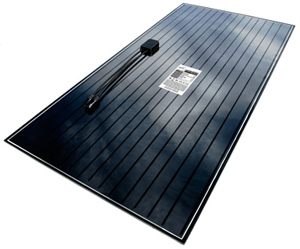The most important natural resource for generating electricity in the United States isn’t coal, natural gas, or uranium.
It’s water.
All of these fuels (and solar power, too) rely on water as a coolant, consuming massive quantities of a precious resource that is dwindling in many parts of the Southwest. Climate change means even less water in the future for the arid lands of the West — while energy consumption continues to grow.
[Water is also used in other parts of the energy cycle. For example, an average of 3 million gallons of water are used per natural gas well in the controversial "fracking" process -- the subject of the Oscar-nominated documentary, Gasland.]
According to a new study, “Every Drop Counts: Valuing the Water Used to Generate Electricity,” by Western Resource Advocates, electrical power plants in six Western states — Arizona, Colorado, Nevada, New Mexico, Utah, and Wyoming — used a staggering 129 billion gallons of water in 2005.
As the report points out, such intensive use of water “impact(s) our region’s rivers and aquifers, and tie(s) up water that could meet growing urban, agricultural, or environmental needs.”
There’s a growing awareness of the Water/Energy Nexus — at least among researchers, environmental organizations and within the power industry itself. “Every Drop Counts” is a welcome addition to the literature on one of the nation’s most pressing — and least reported — issues.
The report makes an important distinction between three usually interchangeable terms: Value, cost, and price.
- Value - the amount that the user is willing to pay for it.
- Cost - the cost of delivering water for a particular use.
- Price - the amount users actually pay.
The price of water is typically far below the value, the authors note, because of subsidies and related political decisions.
The report includes a state-by-state analysis of water and energy policies for each of the six Western states. In Arizona, for example, the Arizona Corporation Commission (ACC) under the leadership of Chair Kris Mayes helped lead the Western states in factoring water into the electrical utility equation. (Mayes was recently term-limited off the ACC. Early indications from the new commissioners suggest that the ACC may forfeit many of the gains made under Mayes.)
In 2005, as part of a settlement on a rate-making case, the ACC ordered Arizona Public Service (APS) to consider the feasibility of expanding utility-scale solar generation at existing coal-fired power plants, noting the environmental benefits of potential water savings associated with solar generation.
The report also praises the state’s largest utility, APS, for its water policies. In 2009, the utility began reporting how much water was consumed by its electrical generation. The APS nuclear power plant at Palo Verde (the largest in the nation) uses only recycled water.
“Every Drop Counts” — which could also be titled “Count Every Drop” — may be a bit wonkish for the average reader. That said, the report will help Western residents make sense of their utility bills and give them the information they need to lobby for responsible, positive change.
For more on this issue, see:
Website: Circle of Blue
Reports:
Reducing Water Consumption of Concentrating Solar Power Electricity Generation (Report to Congress, DOE)
Energy Demands on Water Resources (Report to Congress, DOE)
Overview of the Water-Energy Nexus in the United States (National Conference of State Legislatures)
Filed under: All,CO2,Fossil fuels,Laws,Renewables,Solar,Southwest
Trackback Uri













